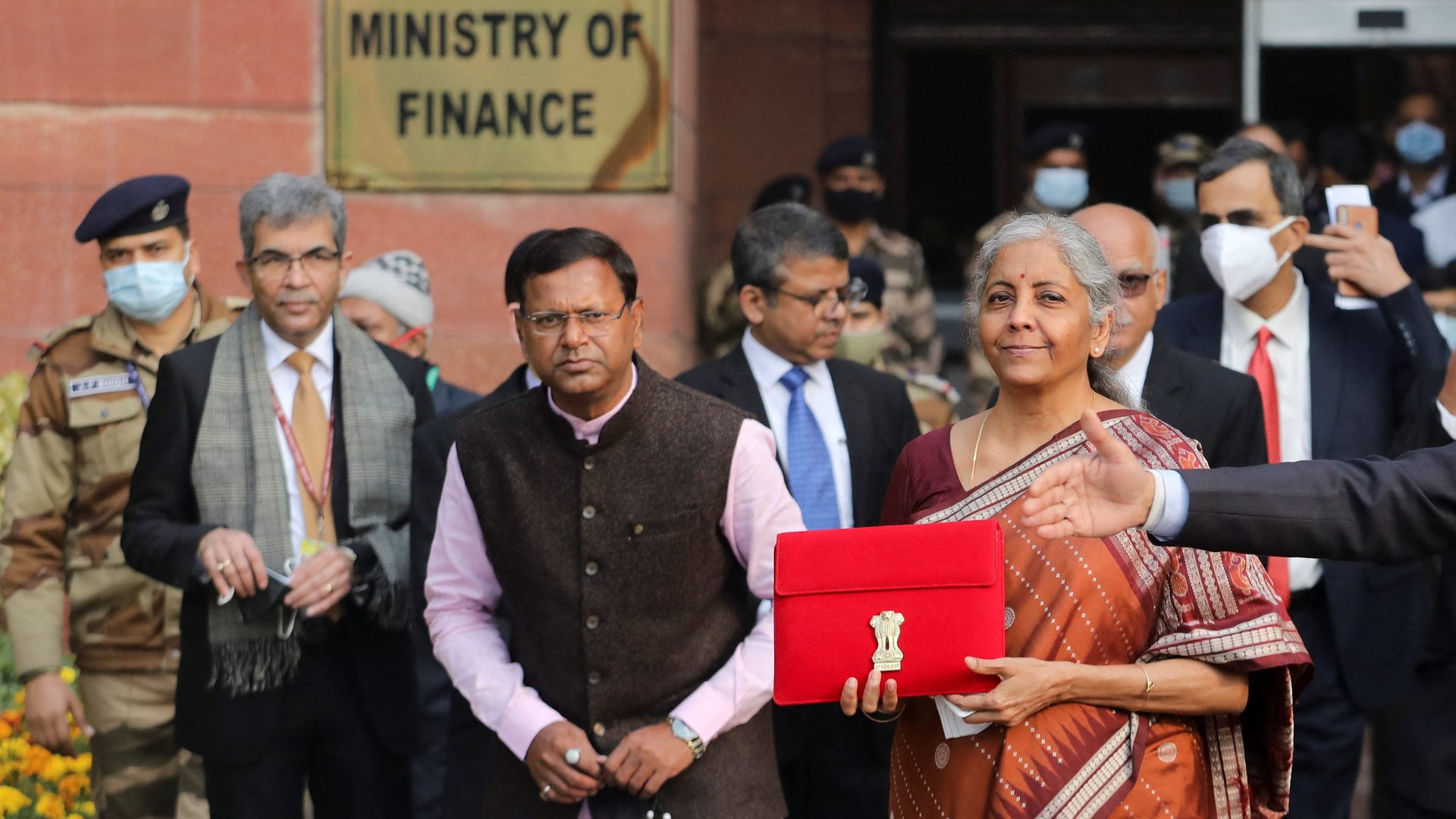India’s fiscal budget continues to be a balancing act between spending and borrowing
The Indian finance minister has been walking a tightrope for the past two years.


The Indian finance minister has been walking a tightrope for the past two years.
While presenting the country’s fiscal budget for 2022-2023 today (Feb. 1), Nirmala Sitharaman announced a projected increase in large capital spending, while hoping to bring down the fiscal deficit. The deficit between the government’s expenditure and receipts in the financial year of 2021-2022 is estimated to be 6.9% of the GDP, while she projected it at 6.4% in the next year.
Sitharaman said India’s real GDP growth in 2021-22 is expected to be at 9.2%, compared to a contraction of 7.3% in 2020-21.
Much of her broad announcements were in line with last year’s budget, as the Narendra Modi government continues on its path of big spending and big borrowing to bounce back from the debilitating economic effects of the covid-19 pandemic.
Modi government’s spending plan
For 2022-23, Sitharaman said, the government’s total capital expenditure will be 7.5 lakh crore rupees ($100 billion), an increase of over 35% from the budget estimates of 2021-22. (Capital expenditure is what the government spends on developing and buying fixed assets such as roads, railways, and other infrastructure.)
However, the year-on-year growth in overall expenditure is lower than the growth of investment in capital. This could indicate the government’s uneven spending on welfare schemes, as well as its urgency to keep a growing fiscal deficit in check.